- Blog
- How to Calculate Landing Page Conversion Rate & How to Optimize Your Landing Pages?
How to Calculate Landing Page Conversion Rate & How to Optimize Your Landing Pages?
-
Barbara Bartucz
- Conversion
- 6 min read
Table of Contents
Have you poured your heart (and budget) into a landing page only to see little to no return in leads and conversions? If so, you might be wondering what’s missing.
Landing page optimization is key to turning your hard work into measurable results. Effective landing page design can significantly boost your conversion rates, making all the difference in your digital marketing efforts.
In this article, we’ll discuss conversion rates. We’ll share the conversion rate benchmark and some tips that help to start optimizing landing pages that get you more conversions).
In short, you’ll learn how to create landing pages that win. Sounds good? Let’s dive in!
What is a good landing page conversion rate?
When creating landing pages, your primary objective is clear: converting site visitors into subscribers or customers. But how do you measure the effectiveness of your landing pages?
The answer lies in tracking your landing page conversion rate, which is the percentage of landing page visitors taking action on your page (making a purchase, filling out a form, or signing up for a newsletter).
So, what’s a good landing page conversion rate?
While there’s no one-size-fits-all answer, a general rule of thumb is that the average landing page has a conversion rate of around 2-3%. A conversion rate above 5% is considered strong, while anything above 10% is stellar.
Remember that average conversion rates vary widely across industries: ecommerce sites have an average conversion rate of around 2%, while B2B software companies have a higher average of about 7%.
Understanding these industry-specific averages is crucial for optimizing your landing pages for better results.
Recommended reading: 27 Ecommerce Conversion Rate Optimization Statistics You Need to Know
How to calculate your landing page conversion rates?
Your conversion rate is one of the most important landing page statistics to track.
If you want to improve your landing page conversions, it’s important to understand how to calculate your conversion rate. Fortunately, it’s a straightforward process that can be accomplished with a simple formula.
To calculate your landing page conversion rate, divide the total number of conversions by the total number of visitors to your landing page. Then, multiply the result by 100 to get a percentage.

Let’s see an example!
If your landing page had 1,000 visitors, and 50 of them made a purchase, you would get:
(50 / 1000) x 100 = 5%
Therefore, your landing page conversion rate would be 5%.
Monitoring and tracking these metrics can significantly help in converting visitors and improving your overall conversion rates.
How to optimize your landing pages for better conversion rates?
Now, let’s check out a couple of tips and tricks you can use to optimize your landing pages.
1. Customize your landing page headlines to align with your ad copy
Since headlines are the first thing visitors see when they land on your page, they can have a significant impact on whether they stay or leave.
When visitors click on your ad, they expect to see what was promised in the ad copy. If your landing page copy and value proposition don’t match the ad, visitors may lose trust and abandon your page, which can lower your conversion rate.
One way to ensure your landing page headlines are consistent with your ad copy is to use the Dynamic Content feature from OptiMonk. This feature enables you to create new landing page variants and personalize them to maximize ROI.
With Dynamic Content, you can customize your landing page copy and value proposition for each ad, ensuring that visitors see what they’re interested in (and what motivated them to click on the ad).
For example, if you’re running a Facebook ad that offers a discount on a specific product….
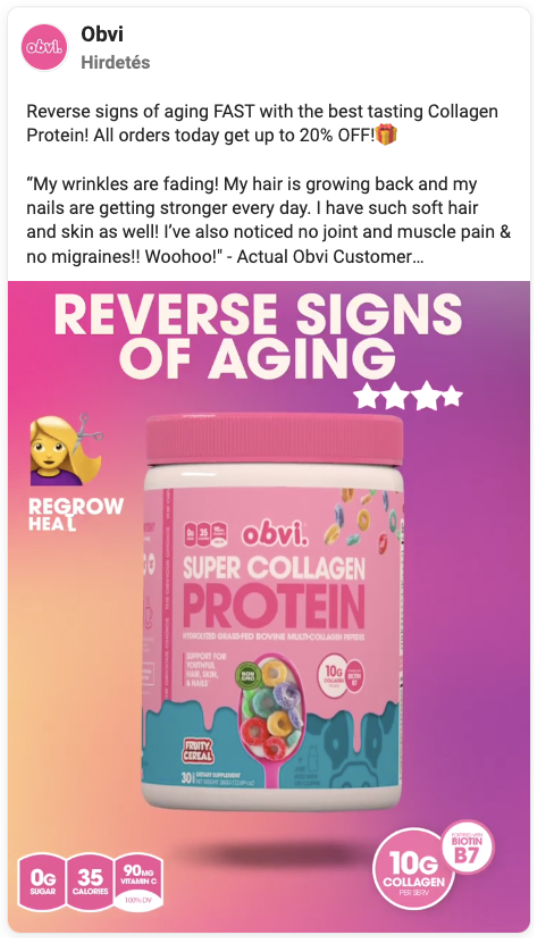
…your landing page headline should mention the discount and the product by name.
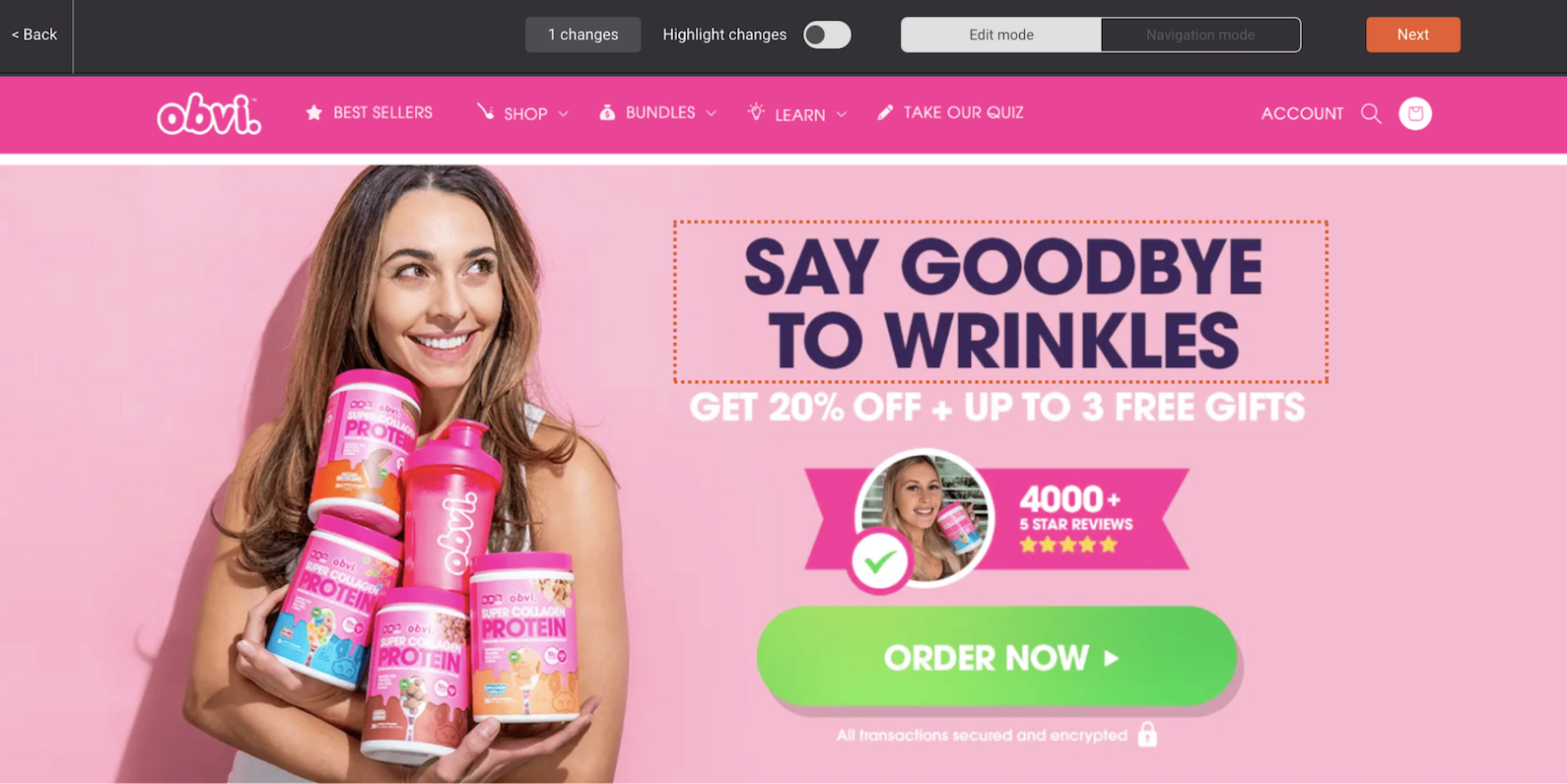
This creates a consistent visitor experience, increasing the likelihood of conversion.
2. Personalize product page messaging for different target audiences
When boosting your landing page conversion rates, one of the most important factors to consider is aligning your product page messaging for different target audiences. By doing this, you can ensure that you show the right value proposition for each visitor.
Let’s say you’re selling a blender. This specific product can be useful for very different types of customers, including:
- busy parents
- avid gym-goers
In this case, you probably have different Facebook ads targeting different groups of people, but they all land on the same product page.
To unlock higher conversion rates and, ultimately, more sales from these ads—and your product pages—you need personalized product messaging that resonates with each customer segment on an emotional level.
So what does that look like in action? Well, you can highlight:
- the convenience of a quick and healthy breakfast for busy parents, and
- the power of a protein smoothie for gym-goers looking to elevate their workouts.
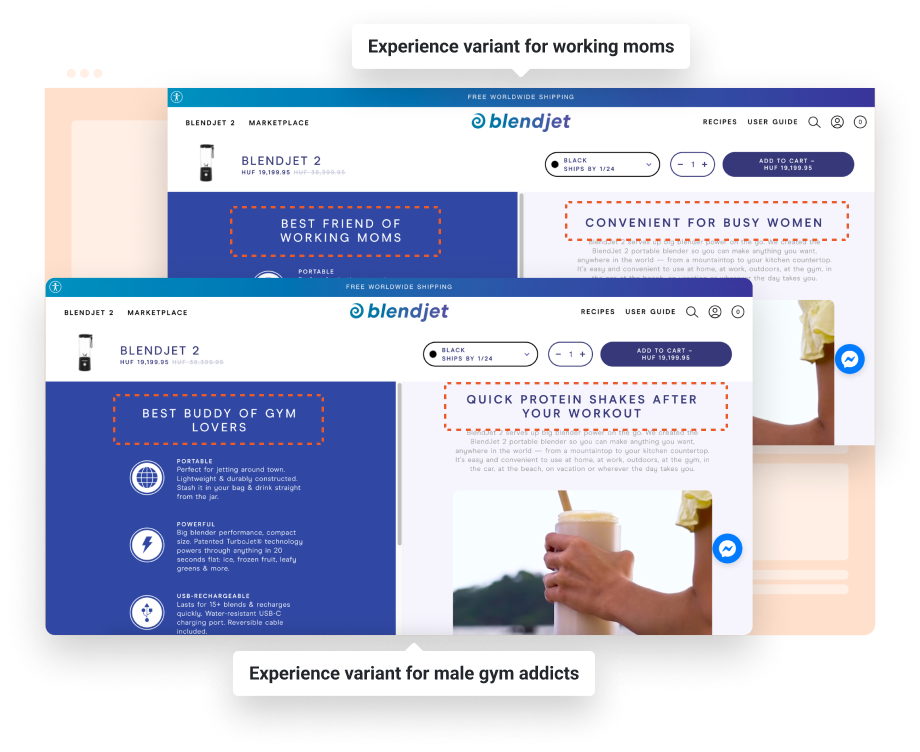
To simplify this process, consider using Dynamic Content to personalize your messaging for each customer group (and achieve an average conversion rate boost of 10% or more).
3. Experiment with varying value propositions in your landing page headlines
If you struggle with low conversion rates on your landing pages, it might be time to rethink your Unique Selling Proposition (USP).
One way to experiment with different value propositions is to vary your landing page headlines. This approach enables you to figure out what your target customers want most and identify the most effective headlines that resonate with them, increasing your revenue.
Varying value propositions can significantly impact your conversion rates, particularly for ecommerce websites. You can create headlines focusing on specific features, benefits, or customer pain points.
Testing headlines with OptiMonk’s Dynamic Content feature can help you determine which drives the most conversions so you can optimize your landing page accordingly.
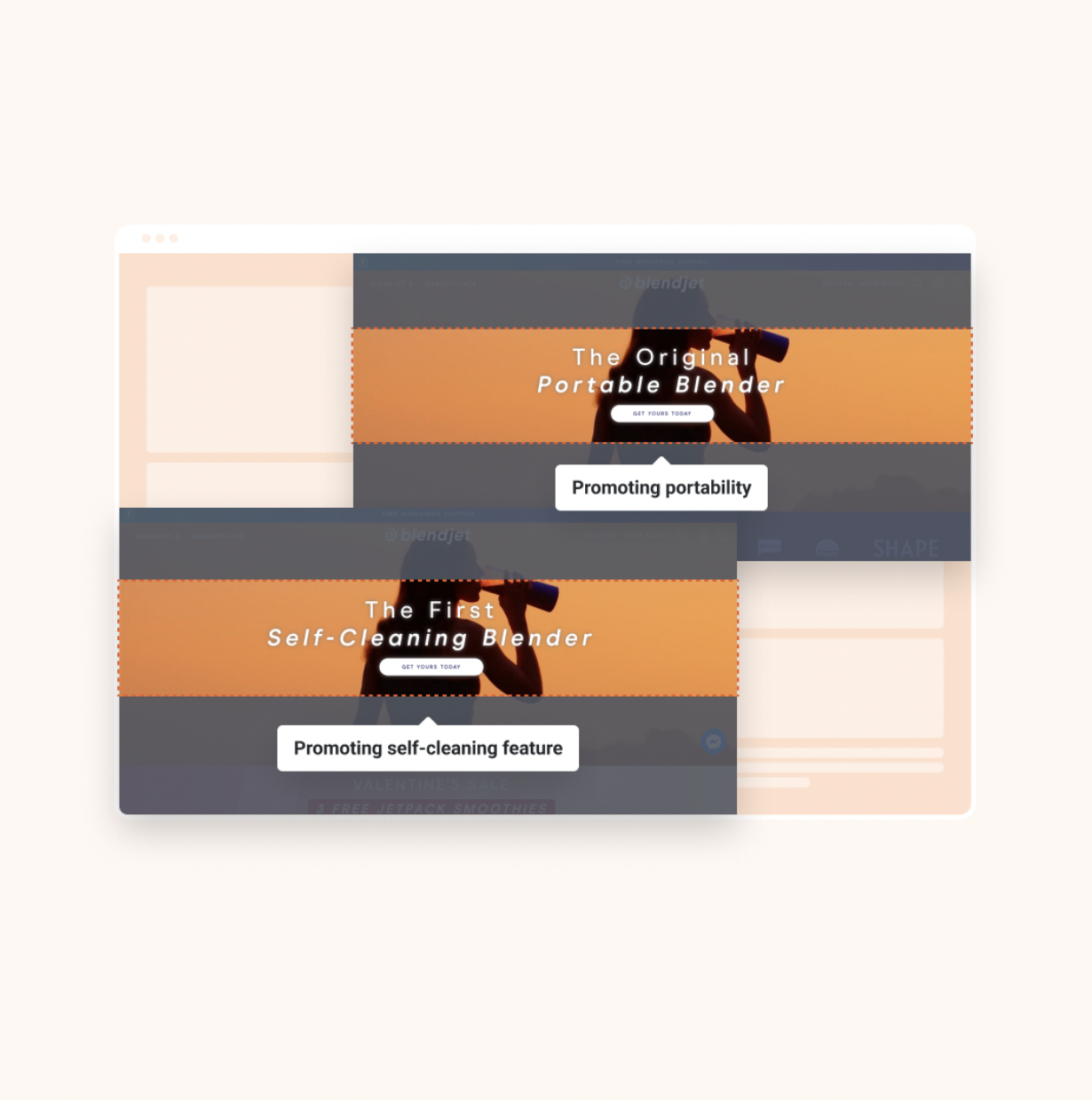
4. Personalize offers based on traffic source for higher conversion rates
Providing customized promotions and discounts to visitors based on where they’re coming from can significantly increase the likelihood of conversion.
You’ll need to identify the various traffic sources bringing visitors to your landing page to get started. Once you’ve identified these sources, you can create customized promotions and discounts specific to each channel.
For example, if you’re getting significant traffic from social media channels like Facebook, Instagram, or TikTok, it’s worth considering this approach.
Tailoring your promotions and discounts to visitors based on their traffic source makes your landing page more appealing and relevant to them, leading to higher conversion rates.
Let’s say you’re running a campaign on Facebook promoting your new line of beauty products. You could create a promotion code exclusive to Facebook users and offer a 10% discount on their first purchase. This personalized offer can make visitors feel like they’re getting a special deal and incentivize them to make a purchase.
Here’s an example for visitors coming from Facebook and Instagram.
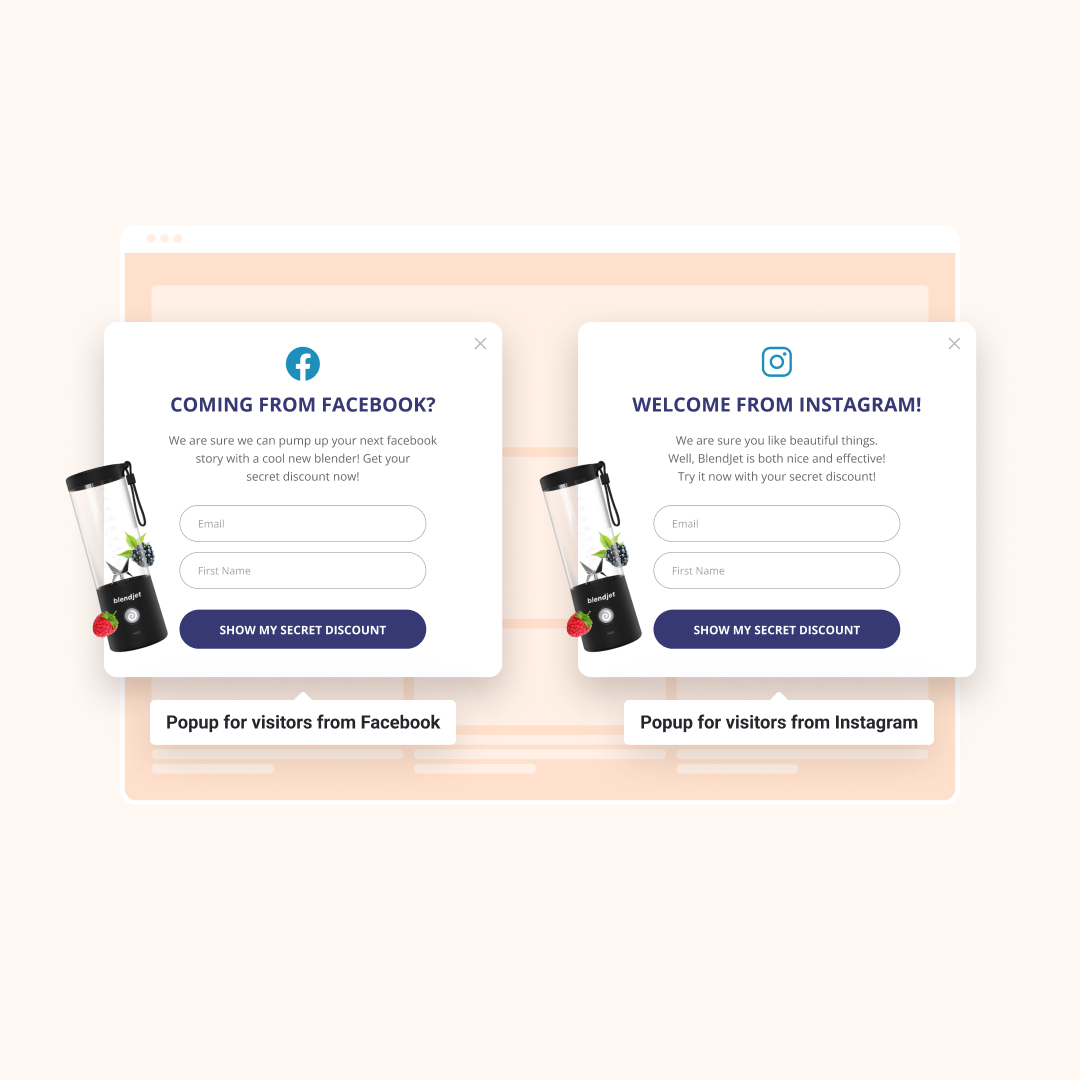
5. Focus on SEO
In today’s world, many people discover landing pages through natural search, so it’s crucial to ensure that your pages are optimized for the right keywords.
You want to make sure that your landing pages are optimized for the keywords related to your product or service. This way, potential customers searching for these keywords will find your landing page and increase your chances of conversion.
To achieve the best results, you should conduct keyword research to determine which keywords you want to target. Include these keywords in your landing page meta titles, descriptions, headings, and content.
Learn more about how to boost your SEO efforts from this article.
6. Use an easy-to-navigate layout
Optimizing your landing pages for better conversion rates is not just about crafting persuasive copy and designing eye-catching graphics. Your website’s structure and layout are crucial factors that can make or break your conversion rates.
An easy-to-navigate layout ensures that visitors can quickly understand your website’s structure and find the information they’re looking for. This can include a clear, concise navigation menu that gives visitors an overview of your website’s content and helps them navigate to the pages they’re interested in.
A well-designed navigation menu can also help visitors understand the relationship between different pages on your website and how they fit together.
Here’s an example from Curology. Their message and CTA are clear, both above the fold.
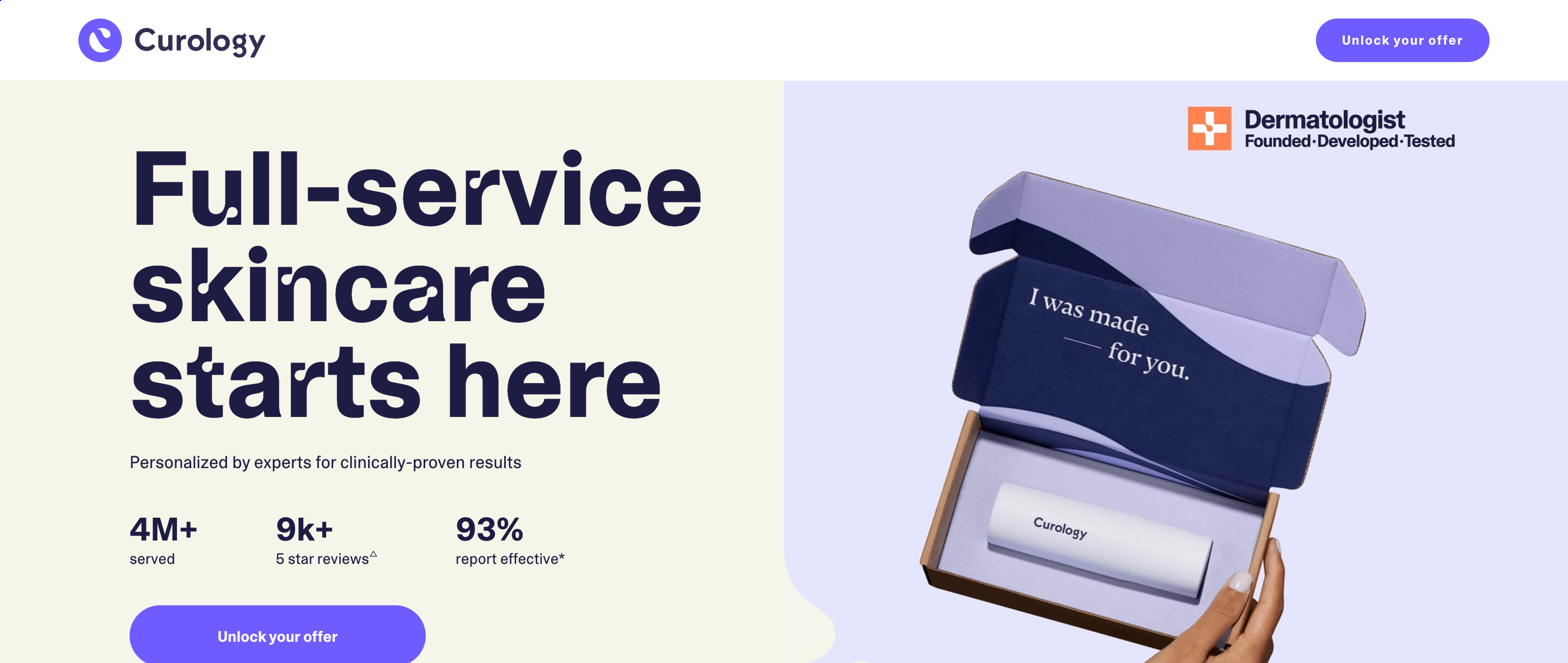
7. Use social proof
Social proof can be a game-changer when optimizing your landing pages for higher conversion rates. If you want to establish credibility and inspire trust in your brand, you can start by featuring positive reviews from satisfied customers. This leads to increased engagement and, ultimately, more sales.
Let’s examine why social proof is so effective and how to use it.
Social proof is the psychological phenomenon where people tend to follow the actions of others, assuming that those actions are the correct behavior in a particular situation.
In other words, people are more likely to trust and believe in something if others do. That’s why it’s such a powerful tool in marketing and why it can lead to higher conversion rates.
One way to showcase social proof on your landing page is to include customer reviews and testimonials. Research shows that 93% of consumers read online reviews before purchasing. That’s a staggering number, highlighting the importance of featuring customer feedback on your landing page.
When displaying reviews, there are a few best practices to remember:
- Make sure you feature authentic reviews from real customers. If visitors suspect that your reviews are fake or manipulated, it can harm your credibility and negatively impact your conversion rates.
- Consider including both positive and negative reviews. While it might seem counterintuitive, including negative reviews can increase your credibility by showing that you’re transparent and honest about your products or services.
- Be sure to respond to reviews, especially negative ones. According to research, 80% of consumers say they trust a company more when they address a negative review or comment. Addressing negative feedback demonstrates that you care about your customers and are committed to providing excellent customer service.
This is how Vegetology used social proof on their product page, increasing their conversion rate by 6%.
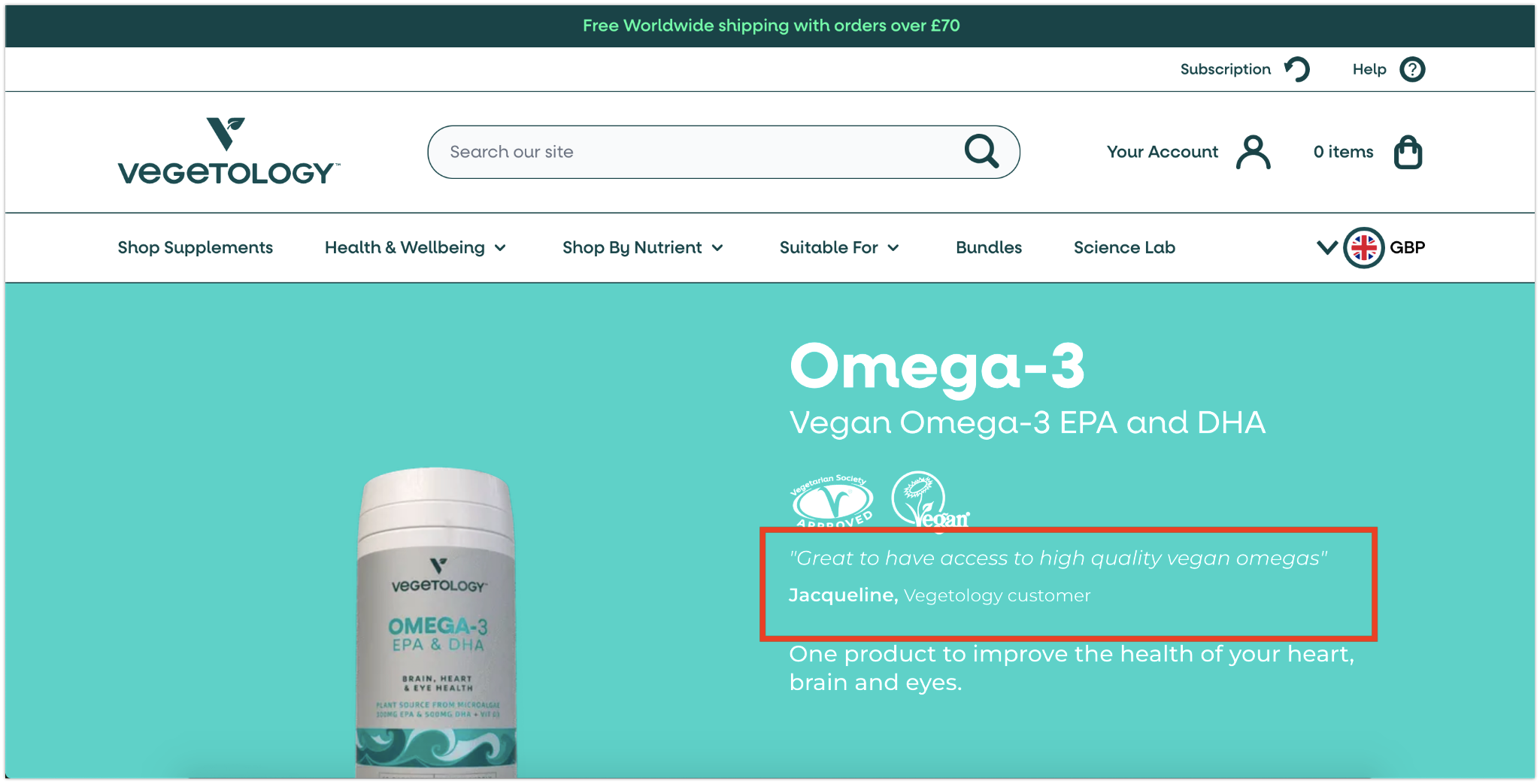
Aside from customer reviews, there are other forms of social proof that you can incorporate into your landing page.
For example, you can include social media icons showing your brand’s many followers, likes, or shares. You can also showcase logos of notable clients or partners, lending credibility to your brand and building trust with potential customers.
8. Optimize for mobile users
With more and more people browsing the web on mobile devices, it’s essential to ensure that your website is optimized for mobile users.
Your website should be responsive and easy to navigate, and it should load quickly on mobile devices. Failure to optimize for mobile can lead to a poor user experience and lower conversion rates.
Here’s a great example from Canva:
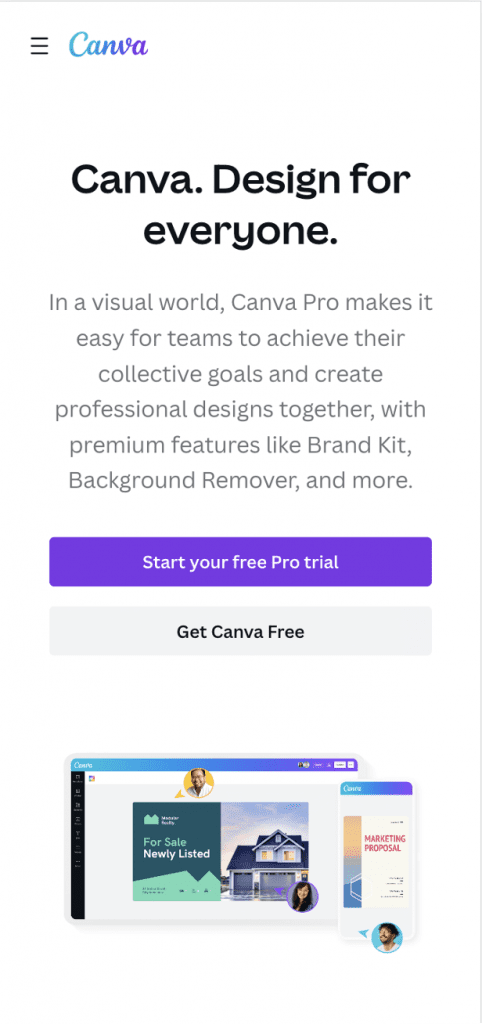
9. Analyze
Analyzing your website’s metrics is crucial for identifying areas for improvement and making data-driven decisions about optimizing your website.
There are many tools and platforms available that can help you track and analyze your website’s performance.
Google Analytics, for example, is a powerful tool that provides detailed insights into your website’s traffic, user behavior, and conversion rates. Regularly reviewing these metrics can help you identify trends, patterns, and areas where you can improve the user experience.
One of the key metrics to track is your website’s bounce rate, which measures the percentage of visitors who leave your website after viewing just one page.
A high bounce rate can indicate that your website is not engaging visitors or providing the information they need to take action. Identifying the pages with the highest bounce rates and improving their content, design, or user experience can reduce your overall bounce rate and increase your website’s engagement and conversions.
Another important metric to track is your website’s conversion rate, which measures the percentage of visitors who take a specific action on your website, such as making a purchase or filling out a contact form.
By tracking your conversion rate and A/B testing different elements of your website, such as your calls to action, forms, and landing pages, you can optimize your website to increase your conversion rate and drive more leads or sales.
In addition to tracking your website’s performance metrics, it’s essential to conduct user testing and gather feedback regularly. You want to learn what people think about your website’s design, usability, and messaging.
Once you start gathering this feedback and incorporating it into your optimization efforts, you will create a website that is not only optimized for conversions but also provides a positive user experience that builds trust and credibility with your visitors.
Recommended reading: 12 Conversion Rate Optimization Best Practices You Need to Know in 2024
5 common landing page mistakes to avoid
Now let’s take a quick look at the most common mistakes you want to avoid with your landing pages.
- Overcomplicating the page: While you may want to showcase all of your products or services, it’s important to remember that your landing page should be focused on a single goal or message. A cluttered or confusing landing page can quickly turn off potential customers, causing them to leave the page without taking any action.
- Inconsistent messaging from ad/email to the landing page: Visitors who click on an ad or email expect to land on a page that offers them exactly what was promised in the ad or email. If your landing page does not meet those expectations, visitors will quickly lose interest or feel tricked, and they’ll probably end up leaving your page.
- Neglecting mobile optimization: With more and more people browsing the internet on their mobile devices, you need to ensure that your landing page is mobile-friendly. Neglecting mobile optimization will lead to a poor user experience, higher bounce rates, and fewer conversions. See some outstanding mobile landing page examples here.
- Providing too many distractions: Avoid including unnecessary links or elements that distract visitors from the main message or call to action, as they can decrease your conversion rate.
- Using vague or confusing language: Your messaging should be clear and concise. Visitors need to be able to quickly and easily understand what your page is about and what action they should take. Avoid jargon or technical language that your audience may not understand.
Final thoughts
Understanding conversion rate optimization is crucial if you want to grow your business. By being aware of what a “good” conversion rate is for your industry, you’ll be able to set realistic targets for your CRO efforts.
By implementing the strategies discussed in this article, you can create a landing page that:
- is optimized for search engines,
- has a clear and intuitive layout,
- uses social proof to build trust with your visitors, and
- increases conversions.
Also, don’t forget that regularly analyzing your website’s metrics can help you identify areas for improvement and make data-driven decisions about strategic changes you can make.
Follow these tips and you’ll be well on your way to creating a high-converting landing page that drives growth for your business!
Migration has never been easier
We made switching a no-brainer with our free, white-glove onboarding service so you can get started in the blink of an eye.

What should you do next?
Thanks for reading till the end. Here are 4 ways we can help you grow your business:
Boost conversions with proven use cases
Explore our Use Case Library, filled with actionable personalization examples and step-by-step guides to unlock your website's full potential. Check out Use Case Library
Create a free OptiMonk account
Create a free OptiMonk account and easily get started with popups and conversion rate optimization. Get OptiMonk free
Get advice from a CRO expert
Schedule a personalized discovery call with one of our experts to explore how OptiMonk can help you grow your business. Book a demo
Join our weekly newsletter
Real CRO insights & marketing tips. No fluff. Straight to your inbox. Subscribe now
Barbara Bartucz
- Posted in
- Conversion
Partner with us
- © OptiMonk. All rights reserved!
- Terms of Use
- Privacy Policy
- Cookie Policy
Product updates: January Release 2025








